| Author |
Merit Badge Awardees - Woo-hoo Sisters!:  Farmgirl Sisterhood Merit Badge Awardees Farmgirl Sisterhood Merit Badge Awardees  |
|
MaryJane
Queen Bee
    
16806 Posts

MaryJane
Moscow
Idaho
USA
16806 Posts |
 Posted - Jun 24 2021 : 3:47:23 PM Posted - Jun 24 2021 : 3:47:23 PM

|
Cindy Kinion (AussieChick, #6058) has received a certificate of achievement in Make It Easy for earning a Beginner Level Though the Looking Glass Merit Badge!
“For thousands of years, artisans have found inspiration in glistening glass. In any form, glass can produce exquisite works of art. However, when coloured, the medium climbs to kaleidoscopic new heights. Though often associated with windows and places of worship, stained glass has been adopted and adapted for all kinds of art, from ancient cups to contemporary installations. Coloured glass has been made since ancient times. Both the Egyptians and the Romans manufactured small coloured glass objects. Stained glass gained recognition as a Christian art form sometime in the fourth century as Christians began to build churches. The spread of Christianity throughout Europe is directly related to the expansion of stained glass across the globe and made stained glass the dominant art form of the new millennium. One of the oldest known examples of multiple pieces of coloured glass used in a window were found at St. Paul's Monastery in Jarrow, England, founded in 686 AD. The oldest complete European windows are thought to be five relatively sophisticated figures in Ausburg Cathedral. Stained glass was also produced by Arab architects in the Middle East in the 8th century. Jabir ibn Hayyan ,the Persian chemist described 46 original recipes for producing coloured glass in Kitab al-Durra al-Maknuna (The Book of the Hidden Pearl). During the Gothic period (the 13th and 14th century) stained glass history expanded and stained glass windows took centre stage in elaborate and monumental cathedral designs.
Indeed, many artisans have emerged as innovators in the act of glassmaking and made quite an impression on the history of this ancient form of art. But, nevertheless, there have been some that stood out more than others. These brave artists dared to go where no one else had gone before and developed entirely new methods, techniques, and styles of stained glass artistry. The name Tiffany is now almost entirely synonymous with the term stained glass. Though originally trained as a painter, Louis Comfort Tiffany began studying the techniques of glassmaking at the young age of twenty-four. He thereafter worked at several different glasshouses and then established his own firm in 1879. He is perhaps most famously known for his stained glass lamps, mosaics, and contributions to the art deco and aesthetic movements.
Frank Lloyd Wright was a man of many traits, but is perhaps most famously known for his contributions to architecture. Wright had a long career in design and glassmaking. He joined a band of young architects in the late 1800s and founded what became known as the Prairie School. Inspired the American Arts and Crafts Movement, Wright and these other young artists developed what is now referred to as prairie style stained glass.
Charles Rennie Mackintosh was an architect, artist, and designer from Glasgow, Scotland. It was in this very same city that Mackintosh spent most of his life and his career. His work became internationally famous after the completion of his design for the Glasgow School of Art. Mackintosh developed a very distinct style of glass art which is now referred to by Macintosh stained glass. Mainly characterized by attractive floral inspired motifs and subtle curves, it’s easy to see why Mackintosh stained glass is still highly popular today.
My favourite Stained-glass artist is Veronica Mary Whall (1887–1967). She was an important stained glass artist, painter, and illustrator associated with the Arts and Crafts Movement. Her father, Christopher Whall, was the leader of the Arts and Crafts Movement in stained glass. She was educated in the techniques of painting and stained glass making in her father's studio-workshop. She later became his studio assistant and designer for his studio in 1914. In 1922, Veronica and her father co-founded a stained glass studio together, which she managed for nearly thirty years after his death in 1924. Veronica was born in 1887 in Stonebridge, Surrey. She showed artistic talent at a very young age and was only 13 when she drew Saint Catherine as part of a window for the Lady Chapel of Gloucester Cathedral. She completed many stained glass commissions during her lifetime, initially working for Christopher Whall's studio workshop and later at the Whall & Whall studio. Many of her works outside the United Kingdom are to be found in New Zealand, such as those at the Christchurch Nurses' Memorial Chapel. Commissioned by Joseph Davis, Veronica made for Whalley Methodist Church, St. Francis of Assisi and The Madonna and Child windows. These windows are said to be among her best works. It is her works in the Christchurch Nurses’ Memorial Chapel that I particularly like.
She created 73 windows for King Arthur's Hall, Tintagel, Cornwall, that opened in 1933. As of 1997 it is considered to be the largest collection of stained glass panels of King Arthur made in the 20th century and a great example of Arts and Crafts workmanship.
I walked around of nearest town of Esk to take note of the stained-glass windows. Most are featured in the churches of the town. I also took note of some of the beautiful stained-glass windows on a recent trip in to Toowoomba. The Quest Hotel lobby and reception featured the original stained-glass windows and the beautiful sandstone façade of Margaret Street’s former Church of Christ, circa 1904. The Empire Theatre and neighbouring Empire Church Theatre also feature stunning examples of stained-glass artistry.”

MaryJane, Farmgirl #1 Plowin' Thru ~ giving aprons a good wrap for 45 years and counting ~
 |
 |
|
|
MaryJane
Queen Bee
    
16806 Posts

MaryJane
Moscow
Idaho
USA
16806 Posts |
 Posted - Jun 24 2021 : 3:50:12 PM Posted - Jun 24 2021 : 3:50:12 PM

|
Cindy Kinion (AussieChick, #6058) has received a certificate of achievement in Farm Kitchen for earning an Intermediate Level Unprocessed Kitchen Merit Badge!
“I decided to make my own Gluten-Free White Chocolate Chip Cookies and my own taco seasoning using organic ingredients.
My White Chocolate Chip Cookies recipe uses: organic coconut sugar, organic cultured butter, Organic Gluten Free Self-raising flour, 1 organic egg, Organic chocolate chips. The same store-bought item contains: gluten free flour, soy flour, emulsifier (soy lecithin), thickeners (xanthan gum, guar gum, 464), potato starch, butter, caster sugar, white chocolate chips (sugar, cocoa solids, milk solids, natural vanilla, flavor, emulsifiers), brown sugar, desiccated coconut, baking powder, iodised salt, egg powder, lemon oil, natural flavor.
The taco seasoning that I made used all organic spices (chilli powder, cumin, paprika, salt, garlic powder, dried onion, oregano, black pepper). The El Paso Taco Mix from the store contains: sugar, maize flour, salt, garlic, cumin, paprika, tomato, onion, oregano, food acid (citric acid), fennel, allspice, cinnamon, black pepper, anticaking agents (silicon dioxide), bay leaves.”
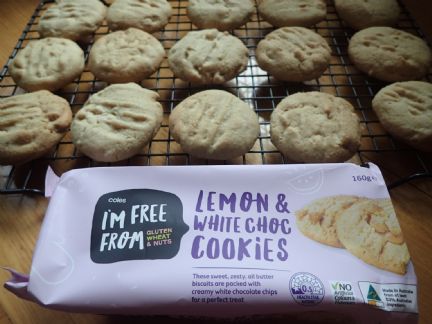
MaryJane, Farmgirl #1 Plowin' Thru ~ giving aprons a good wrap for 45 years and counting ~
 |
 |
|
|
MaryJane
Queen Bee
    
16806 Posts

MaryJane
Moscow
Idaho
USA
16806 Posts |
 Posted - Jun 24 2021 : 3:50:58 PM Posted - Jun 24 2021 : 3:50:58 PM

|
Cindy Kinion (AussieChick, #6058) has received a certificate of achievement in Farm Kitchen for earning an Intermediate Level Carpe Cocoa Merit Badge!
“I researched where cocoa beans are grown and what process is required to turn them into chocolate. I also learned how to temper chocolate.
The 2 chocolate recipes that I made for this merit badge were a "Chocolate Molasses Pork Roast" and "Chia Seed Chocolate Cake".
Cocoa beans are produced in tropical zones around the Equator, where climate conditions are well suited for growing cocoa trees. About 70 percent of the world's cocoa beans come from four West African countries: Ivory Coast, Ghana, Nigeria and Cameroon.
The process of making chocolate starts with the cocoa beans being passed through a machine that removes dried cocoa pulp, pieces of pod and other extraneous material. To bring out the characteristic chocolate aroma, the beans are roasted in large rotary cylinders. Depending upon the variety of the beans and the desired end result, the roasting lasts from 30 minutes to two hours at temperatures of 250 degrees Fahrenheit and higher. As the beans turn over and over, their moisture content drops, their colour changes to a rich brown, and the characteristic aroma of chocolate becomes evident. The cocoa beans are cooled quickly and their thin shells, which have become brittle by roasting, are removed. A giant winnowing machine that passes the beans between serrated cones so they are cracked rather than crushed. In the process, a series of mechanical sieves separate the broken pieces into large and small grains while fans blow away the thin, light shell from the meat or "nibs." The nibs, which contain about 53 % cocoa butter, pass through refining mills and are ground between large grinding stones or heavy steel discs creating a cocoa paste. The paste is subjected to hydraulic pressure, and the cocoa butter flowing out is a pure and valuable fat with a marked aroma; after filtering and purifying it looks very much like ordinary butter.
The cocoa butter has important functions. It not only forms part of every recipe, but it also later gives the chocolate its fine structure, beautiful lustre and delicate, attractive glaze. The heat generated by grinding causes the cocoa butter or fat to melt and form a fine paste or liquid known as chocolate "liquor". When the liquid is poured into moulds and allowed to solidify, the resulting cakes are unsweetened or bitter chocolate.
Up to this point, the manufacturing of cocoa and chocolate is identical. The by-product of cocoa, cocoa butter, is the essential component of chocolate - about 25% of the weight of most chocolate bars.
To make cocoa powder chocolate liquor is pumped into hydraulic presses weighing up to 25 tons, and when the pressure is applied, 80% cocoa butter is removed. The fat drains away through metallic screens as a yellow liquid, and then is collected for use in chocolate manufacturing.
The "cake" which is left may eventually be made into cocoa powder by being further crushed, milled and finely sifted. Three or five vertically mounted steel rollers rotate in opposite directions. Under heavy pressure, they pulverize the tiny particles of cocoa and sugar down to a size of approx. 30 microns. (One micron is a thousandth part of a millimetre!)
Most manufacturers add non-fat milk, flavors, sugar and other ingredients. The resulting product will contain between 10 and 22% cocoa butter. In the "Dutch" process, cocoa is treated with an alkali and develops a slightly milder flavor, and has a darker appearance. The alkali acts as a processing agent rather than as a flavor ingredient.
Proper “tempering”—heating and cooling chocolate to stabilize it for making candies and confections—gives chocolate a smooth and glossy finish, keeps it from easily melting on your fingers, and allows it to set up beautifully for dipped and chocolate-covered treats. In the tempering process, melted chocolate is first cooled, causing the fatty acid crystals to form nuclei around which the other fatty acids will crystallize. Once the crystals connect, the temperature is then raised to keep them from solidifying. Tempered chocolate can be tempered over and over again. You want to keep the working temperature of about 89°F when working with it. If it goes far below that temperature, set it back over the double boiler until it is 89°F again. If it goes much above that temperature, add more seed chocolate to drop the temperature.”
MaryJane, Farmgirl #1 Plowin' Thru ~ giving aprons a good wrap for 45 years and counting ~
 |
 |
|
|
MaryJane
Queen Bee
    
16806 Posts

MaryJane
Moscow
Idaho
USA
16806 Posts |
 Posted - Jun 24 2021 : 3:52:53 PM Posted - Jun 24 2021 : 3:52:53 PM

|
Cindy Kinion (AussieChick, #6058) has received a certificate of achievement in Make It Easy for earning a Beginner Level Collect It! Merit Badge!
“I first started collecting stamps when I was in primary school. My mother signed me up to a stamp collecting club through the Australia Post. They would send you a starter kit with a folder for mounting the stamps and then each month you would receive a random selection of used stamps to add to your collection. I continued to add to my collection through high school, but stopped when I left home for university. I have recently started adding to my collection again since our church joined the “Stamps for Mission” program. Stamps for Mission was established in 1938 through the efforts of Pastor Ted Koch and Mr Ern Unger. Ern became the first stamp receiver and did this for the next 65 years, encouraging many others along the way. 2018 marked ten years since LCA International Mission (formally Board for Mission) took over the Stamps for Mission project from the Lutheran Youth of Australia. It is overwhelming to think how much money has been raised from those seemingly worthless used stamps.
The postage stamp is a relatively modern invention, first proposed in 1837 when Sir Rowland Hill, an English teacher and tax reformer, published a seminal pamphlet entitled Post Office Reform: Its Importance and Practicability. Among other reforms, Hill's treatise advocated that the English cease basing postal rates on the distance a letter travelled and collecting fees upon delivery. Instead, he argued, they should assess fees based on weight and require prepayment in the form of stamps. Hill's ideas were accepted almost immediately, and the first English adhesive stamp, which featured a portrait of Queen Victoria, was printed in 1840. This stamp, called the "penny black," provided sufficient postage for letters weighing up to .5 ounce (14 grams), regardless of distance. To encourage widespread use of stamps, letters mailed without them were now charged double at the point of delivery. After Britain, Brazil became the next nation to produce postage stamps, issuing stamps made by its currency engraver in 1843. United States postage stamps (in five and ten cent denominations) were first authorized by Congress in 1847 and came on the market on July 1 of the same year. By 1860, more than 90 countries, colonies, or districts were issuing postage stamps. The first Australian national Postage Due stamps were issued on 1 July 1902.
Most early stamps were of a single colour—the United States, for example, did not produce multicoloured stamps until 1869, and they did not become common until the 1920s. The penny black and other early stamps needed to be separated with scissors; perforated stamps did not appear until 1854 in England and 1857 in the United States. However, though larger stamps are occasionally produced, the penny black's original size, .75 by .875 inch (1.9 by 2.22 centimetres), has remained standard.
Initially, stamps were manufactured by the same businesses that provided a country with currency, or by a country's mint. Yet it soon became apparent that printing stamps is unlike minting money in that the different paper types call for different printing pressures. Consequently, printing stamps became a discrete activity, though one still sometimes carried out by companies that made currency. In ensuing years, methods of producing stamps mirrored the development of modern printing processes. Today, stamp making processes utilize much of the finest printing technology available.
The oldest stamp that I have in my collection is a 1937 Australia halfpenny orange kangaroo stamp. When researching online, it looks like there are quite a few available ranging from $1.82 to $3.50.
The QPC is the body representing Queensland on the Australian Philatelic Federation. The QPC includes most of the QLD Stamp Clubs, a large number of stamp dealers and Australia Post. Our nearest stamp club is the Toowoomba Stamp Club which meets on the second Saturday of every month.”
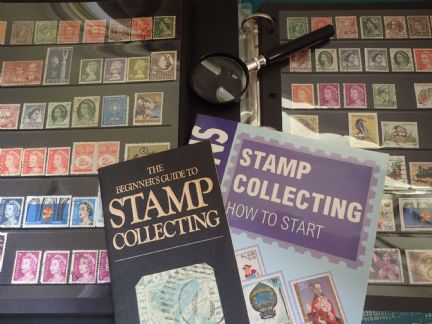
MaryJane, Farmgirl #1 Plowin' Thru ~ giving aprons a good wrap for 45 years and counting ~
 |
 |
|
|
MaryJane
Queen Bee
    
16806 Posts

MaryJane
Moscow
Idaho
USA
16806 Posts |
 Posted - Jun 24 2021 : 3:54:14 PM Posted - Jun 24 2021 : 3:54:14 PM

|
Cindy Kinion (AussieChick, #6058) has received a certificate of achievement in Each Other for earning an Expert Level International Civics Challenge Merit Badge!
“I continued to research the Australian Government for this merit badge and answer the following questions:-
When was this government formed? Australia became a nation on 1 January 1901 when 6 British colonies—New South Wales, Victoria, Queensland, South Australia, Western Australia and Tasmania—united to form the Commonwealth of Australia. This process is known as federation.
How does this government view individual rights and civil issues? Human rights are an important part of our lives here in Australia. In fact, they are so much a part of everyday living that we often take them for granted. Consider how often you drink clean water, eat food, go to school, say or write what you think, get treated by a doctor, practice a religion (or not), or expect to be treated fairly by others. All of these everyday activities depend on the adequate protection of your human rights, and the rights of others. Australia has a strong and proud record on human rights. However, that record is not perfect. Some people are denied their basic rights, because of their colour, their race, their sex, sexuality, a disability or some other aspect of who they are. Human rights issues can potentially affect anyone. Some people might experience discrimination in the workplace because of their age, race or gender. Other people with different sexual orientations or gender identities may be bullied for how they express themselves or who they are attracted to. Children and young people can be subjected to violence in the playground or at home. No matter what a person's status in society, they or a family member may at some stage in their lives be affected by a violation of their human rights. In the following quote, the former Social Justice Commissioner, Mick Dodson, spoke of what human rights means in Australia for Aboriginal and Torres Strait Islander people. He used the term 'social justice', but he might just as easily have spoken of human rights generally:
'Social Justice is what faces you in the morning. It is awakening in a house with an adequate water supply, cooking facilities and sanitation. It is the ability to nourish your children and send them to school where their education not only equips them for employment but reinforces their knowledge and appreciation of their cultural inheritance. It is the prospect of genuine employment and good health: a life of choices and opportunity. A life free from discrimination.' Mick Dodson, Social Justice Commissioner (1993 - 1998).
Everyone has the responsibility to respect the human rights of others. Within Australia, the Australian Government has particular responsibilities to ensure that human rights are protected. In order to ensure that the human rights standards contained in international treaties are observed and enforceable within Australia, the government must introduce them into domestic law. This process is known as ‘ratification’. Once international human rights standards are protected in national legislation, the Australian court system is able to ensure that they are protected and cannot be overruled by any state or territory legislation that contradicts the treaty
What were the significant historical events that led to the institution of this government? Some of the most significant historical events that led to the institution of the Australian Government include:- 1770:- Lieutenant James Cook charts Australia’s eastern coastline and proclaims it Britain’s possession. This marks the first claim to British sovereignty over the Australian continent. 1786:- The British Government selects Captain Arthur Phillip to establish a new British colony, to become known as New South Wales. His first Commission is signed on 12 October 1786. A second Commission issued in April 1787 appoints Captain Phillip as Captain-General and Commander-in-Chief of the First Fleet, and a third Commission, dated 24 April 1787, provides him with details concerning the limits of the new colony and sets out his general tasks. 1788:- On 19 January the First Fleet enters Botany Bay under the command of Captain Arthur Phillip, and on 26 January, from the landing site at Port Jackson in Sydney Cove, he proclaims the new colony of New South Wales. The First Fleet comprises 1030 people including male and female convicts, marines and civil officers and their wives, and 37 children. 1814:- Matthew Flinders completes the first circumnavigation of the continent in 1803. He writes in his journal, A Voyage to Terra Australis, that the name Australia is more agreeable to the ear. Governor Macquarie subsequently adopts the name Australia; in official correspondence after receiving a copy of Flinders journal, A Voyage to Terra Australia, published in 1814. 1840:- An Order-in-Council declares that New South Wales will receive no more convicts. While convict transportation continues to other states, the movement to end the practice grows stronger. Convict settlement in Australia will finally end in 1868. 1901:- On 1 January the Commonwealth of Australia is proclaimed in Centennial Park, Sydney. The Proclamation and Letters Patent of the Governor-General, Lord Hopetoun, are read out and the nine members of the interim federal Ministry are sworn in. 1901:- Edmund Barton, leader of the Federation movement, is appointed as Australia’s first Prime Minister for an interim period pending national elections, which he later wins. During Barton’s term, he introduces legislation to establish the High Court of Australia, sets the first national customs duties and excises, and establishes the White Australia Policy. For more information, visit the Australian Prime Ministers Centre.
What forms of government existed before the current government? Australia’s model of government is often referred to as the Westminster System, because it derives from the United Kingdom parliament at Westminster. Australia is a federation of six states, each of which was until 1901 a separate British colony. Each of the self-governing British colonies were subject to the British Parliament. Each colony had its own – often quite distinct – laws, railway gauge, postage stamps and tariffs.”
MaryJane, Farmgirl #1 Plowin' Thru ~ giving aprons a good wrap for 45 years and counting ~
 |
 |
|
|
MaryJane
Queen Bee
    
16806 Posts

MaryJane
Moscow
Idaho
USA
16806 Posts |
 Posted - Jun 24 2021 : 3:56:05 PM Posted - Jun 24 2021 : 3:56:05 PM

|
Cindy Kinion (AussieChick, #6058) has received a certificate of achievement in Garden Gate for earning an Intermediate Level The Good, Bad, and Ugly ... Bugs Merit Badge!
“After researching beneficial and harmful bugs for my beginner badge, I diagnosed 2 problems associated with harmful pests in my garden and trialled some solutions.
I had a problem with black scale and black sooty mould on my citrus trees. I used neem (eco-neem is a registered organic insecticide for the control of a broad range of chewing and sucking insects including: caterpillars, curl grubs, grasshoppers (wingless), aphids, mites, lawn armyworm, citrus leafminer, whitefly, mealybugs and fungus gnats in soil. It will also control sooty mould). I sprayed it on to the trees and within a few days, the sooty mould started to become flaky and I could brush it off. On occasion, I may need several applications to clear the problem.
Whilst not a "bug" problem, I also tried a product called "Poss-Off" which is an organic blend of garlic, citronella and capsicum to deter the possums and beetongs that were eating my new protea plants and my gazanias. The possums and beetongs are most active at night, so you spray the product on in the evening, especially on the new growth. I had to spray daily for about a week before I noticed the plants starting to produce new growth without being chewed off. The product label states that persistence is important in changing animal behaviour - change can be rapid or gradual. Apply daily until undesirable habits are broken - then every 2 to 3 weeks.”
MaryJane, Farmgirl #1 Plowin' Thru ~ giving aprons a good wrap for 45 years and counting ~
 |
 |
|
|
MaryJane
Queen Bee
    
16806 Posts

MaryJane
Moscow
Idaho
USA
16806 Posts |
 Posted - Jun 24 2021 : 3:57:53 PM Posted - Jun 24 2021 : 3:57:53 PM

|
Cindy Kinion (AussieChick, #6058) has received a certificate of achievement in Stitching & Crafting for earning a Beginner Level Embroidery Merit Badge!
“I had learned the basics of embroidery many years ago from both my mother and grandmother. I had previously made a sampler when I was at school, so for this badge, I decided to reignite my love of the craft and go a step further, embroidering 13 squares that will be incorporated into a quilt. The stitching techniques required for the squares are satin stitch, running stitch, back-stitch, lazy daisy and French knots. The designs are mainly garden scenes with flowers, birds, bees and butterflies.
I am quite slow when it comes to embroidery, but now that we are in our winter months, I enjoy sitting by the fire at night and working on my squares. I'm currently working on my 4th square.”
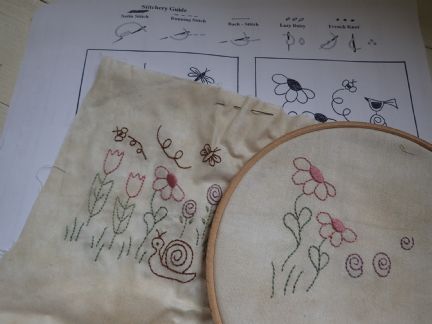
MaryJane, Farmgirl #1 Plowin' Thru ~ giving aprons a good wrap for 45 years and counting ~
 |
 |
|
|
MaryJane
Queen Bee
    
16806 Posts

MaryJane
Moscow
Idaho
USA
16806 Posts |
 Posted - Jun 24 2021 : 4:45:02 PM Posted - Jun 24 2021 : 4:45:02 PM

|
Candy Hogan (Tigger9777, #8283) has received a certificate of achievement in Garden Gate for earning an Intermediate Level The Secret Life of Bees Merit Badge!
“In researching the health difference between raw honey and processed honey, I found out that raw honey is only strained before bottling which allows it to keep most of the beneficial nutrients and antioxidants as well as anti-fungal and antibacterial properties. Regular honey undergoes processing which removes good nutrients such as pollen, and processing reduces the level of antioxidants.
I visited my friend Mike Espindola. He raises honey bees and sells his honey locally under the label JME Farms. There is also another local honey beekeeper selling honey under the label Miss Bee Haven, but I don't know her personally.
I read the book Bees: Nature's Little Wonders and found it interesting about how the bees communicate through dance and how far they travel to collect pollen and how each type of bee has a specific job. It was interesting.”
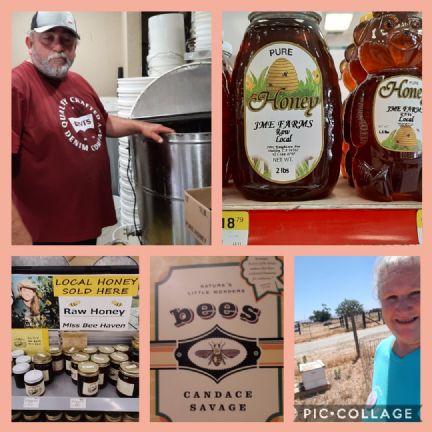
MaryJane, Farmgirl #1 Plowin' Thru ~ giving aprons a good wrap for 45 years and counting ~
 |
 |
|
|
MaryJane
Queen Bee
    
16806 Posts

MaryJane
Moscow
Idaho
USA
16806 Posts |
 Posted - Jun 24 2021 : 4:46:21 PM Posted - Jun 24 2021 : 4:46:21 PM

|
Candy Hogan (Tigger9777, #8283) has received a certificate of achievement in Outpost for earning a Beginner Level Knotty Farmgirls Merit Badge!
“I learned how to tie the square knot the 2/2 hitches and the bow line.
3 uses for each:
The square knot is also known as a reef or Hercules knot. It is used to join 2 ends of a single line to bind around an object such as with parcels, bundles, rolls. Used in sailing for reefing and furling sails. The 2 1/2 hitches are used to secure a cord or line to a fixed object, such as a ring, dock, post, tree. Generalised use in mooring boats. A general utility knot and for moving large objects like logs.
The bowline knot is used to fasten a halyard to the head of a sail. Tie a jib sheet to a clew of a jib, and used as a rescue knot for people who have fallen down holes or off cliffs.
I made my own tree swing. It was good.”
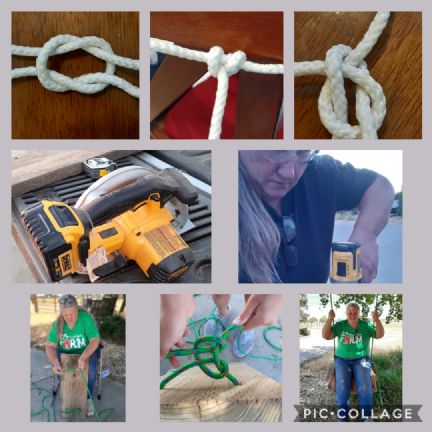
MaryJane, Farmgirl #1 Plowin' Thru ~ giving aprons a good wrap for 45 years and counting ~
 |
 |
|
|
MaryJane
Queen Bee
    
16806 Posts

MaryJane
Moscow
Idaho
USA
16806 Posts |
 Posted - Jun 24 2021 : 4:52:54 PM Posted - Jun 24 2021 : 4:52:54 PM

|
Candy Hogan (Tigger9777, #8283) has received a certificate of achievement in Outpost for earning an Intermediate Level Knotty Farmgirls Merit Badge!
“I learned how to tie the square knot the 2/2 hitches and the bow line.
3 uses for each:
The square knot is also known as a reef or Hercules knot. It is used to join 2 ends of a single line to bind around an object such as with parcels, bundles, rolls. Used in sailing for reefing and furling sails. The 2 1/2 hitches are used to secure a cord or line to a fixed object, such as a ring, dock, post, tree. Generalised use in mooring boats. A general utility knot and for moving large objects like logs.
The bowline knot is used to fasten a halyard to the head of a sail. Tie a jib sheet to a clew of a jib, and used as a rescue knot for people who have fallen down holes or off cliffs.
I made my own tree swing. It was good.”
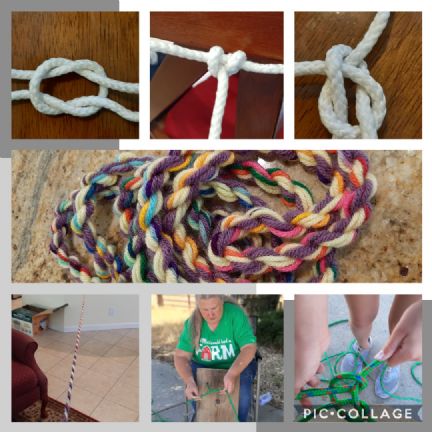
MaryJane, Farmgirl #1 Plowin' Thru ~ giving aprons a good wrap for 45 years and counting ~
 |
 |
|
|
MaryJane
Queen Bee
    
16806 Posts

MaryJane
Moscow
Idaho
USA
16806 Posts |
 Posted - Jun 24 2021 : 4:54:49 PM Posted - Jun 24 2021 : 4:54:49 PM

|
Candy Hogan (Tigger9777, #8283) has received a certificate of achievement in Outpost for earning a Beginner Level "Out There" Women Merit Badge!
“I made my own survival pack as you can see in the pictures.
I identified 10 native plants and their properties such as food medicine or poison.
I chose:
Yarrow as a medicine
Toyon for food and medicine
California Poppy for medicine Manzanita for medicine
Mugwart for medicine
Valley Oak for medicine
Douglas Iris for food, medicine and fiber rope
Hummingbird Sage for tea, jelly and syrup
Coyote mint for food, medicine California Flannelbush for medicine and fiber
California Holly for medicine
Elderberry for medicine.”
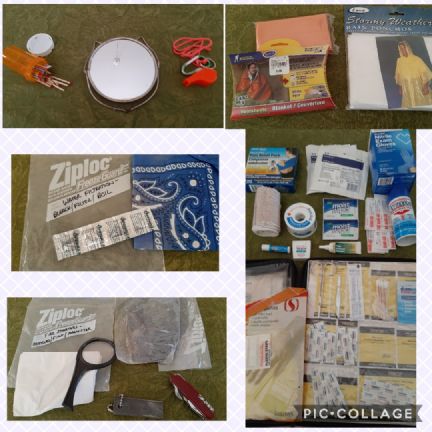
MaryJane, Farmgirl #1 Plowin' Thru ~ giving aprons a good wrap for 45 years and counting ~
 |
 |
|
|
MaryJane
Queen Bee
    
16806 Posts

MaryJane
Moscow
Idaho
USA
16806 Posts |
 Posted - Jun 24 2021 : 4:56:00 PM Posted - Jun 24 2021 : 4:56:00 PM

|
Candy Hogan (Tigger9777, #8283) has received a certificate of achievement in Outpost for earning an Expert Level Buzzin' Around Merit Badge!
“My friend, Allie (#8292), and I got together to take down a tree and some saplings. We wore our hard hats, gloves, safety glasses, and ear protection. It was fun.”
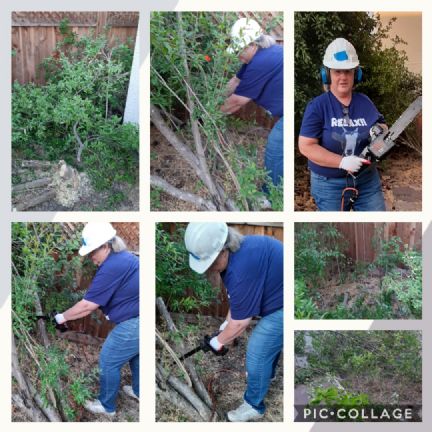
MaryJane, Farmgirl #1 Plowin' Thru ~ giving aprons a good wrap for 45 years and counting ~
 |
 |
|
|
MaryJane
Queen Bee
    
16806 Posts

MaryJane
Moscow
Idaho
USA
16806 Posts |
 Posted - Jun 24 2021 : 5:02:16 PM Posted - Jun 24 2021 : 5:02:16 PM

|
Candy Hogan (Tigger9777, #8283) has received a certificate of achievement in Stitching & Crafting for earning a Beginner Level Scrapbooking Merit Badge!
“I made a scrapbook for my friend Steve to commemorate his laprascopic artificial insemination of his sheep herd. I burned a CD of all the photos plus put all the photos on a thumb Flash drive. It was fun.”
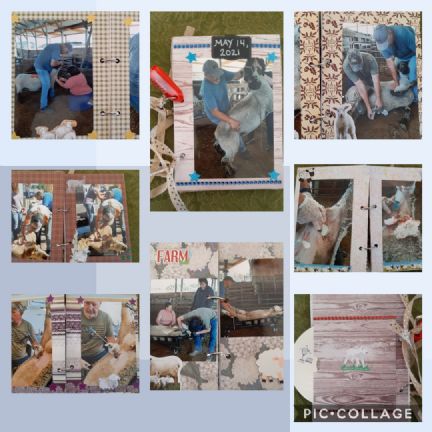
MaryJane, Farmgirl #1 Plowin' Thru ~ giving aprons a good wrap for 45 years and counting ~
 |
 |
|
|
MaryJane
Queen Bee
    
16806 Posts

MaryJane
Moscow
Idaho
USA
16806 Posts |
 Posted - Jun 24 2021 : 5:03:24 PM Posted - Jun 24 2021 : 5:03:24 PM

|
Candy Hogan (Tigger9777, #8283) has received a certificate of achievement in Stitching & Crafting for earning an Intermediate Level Scrapbooking Merit Badge!
“I made a scrapbook to commemorate a dairy goat milking day at my friend Angela's house. We had a lot of fun and I invited other sister members to attend so they could learn as well.
I read the suggested chapters in the book Saving Stuff: How to Care for and Preserve Your Collectibles, Heirlooms, and Other Prized Possessions and found that very interesting. I incorporated new fabric flowers, jewels, and decorative stickers throughout my book. I posted it on the Farm Girl Connection chat room. It was fun.”
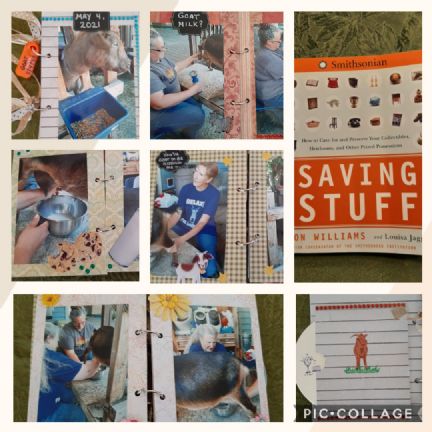
MaryJane, Farmgirl #1 Plowin' Thru ~ giving aprons a good wrap for 45 years and counting ~
 |
 |
|
|
MaryJane
Queen Bee
    
16806 Posts

MaryJane
Moscow
Idaho
USA
16806 Posts |
 Posted - Jun 28 2021 : 12:08:51 PM Posted - Jun 28 2021 : 12:08:51 PM

|
Rea Nakanishi (Lacey, #8284) has received a certificate of achievement in Outpost for earning a Beginner Level Fishing Merit Badge!
“I learned to tie the following knots: clinch, Palomar, turtle, barrel and double surgeons knot. It was a great way to get ready for the up coming free fishing day!
This was a little bit of a learning curve but it was good to know how to tie these knots for the upcoming fishing day.”
.jpg?v 84681121)
MaryJane, Farmgirl #1 Plowin' Thru ~ giving aprons a good wrap for 45 years and counting ~
 |
 |
|
|
MaryJane
Queen Bee
    
16806 Posts

MaryJane
Moscow
Idaho
USA
16806 Posts |
 Posted - Jun 28 2021 : 12:10:09 PM Posted - Jun 28 2021 : 12:10:09 PM

|
Rea Nakanishi (Lacey, #8284) has received a certificate of achievement in Outpost for earning an Intermediate Level Fishing Merit Badge!
“Rules and regulations are now online: https://wildlife.ca.gov/Licensing.
Species include salmon, bluegill, bass, brown trout, and rainbow trout. For salmon bait, herring is used, bluegill like night crawlers, bass like minnows and crawfish, trout like garden worms, nightcrawlers mealworms, grubs, salmon eggs or minnows.
This was very informational. Since I like trout maybe that will be the first fish I try and catch!”
MaryJane, Farmgirl #1 Plowin' Thru ~ giving aprons a good wrap for 45 years and counting ~
 |
 |
|
|
MaryJane
Queen Bee
    
16806 Posts

MaryJane
Moscow
Idaho
USA
16806 Posts |
 Posted - Jun 28 2021 : 12:11:50 PM Posted - Jun 28 2021 : 12:11:50 PM

|
Rea Nakanishi (Lacey, #8284) has received a certificate of achievement in Farm Kitchen for earning an Intermediate Level Canning Merit Badge!
“I spent a fun day canning strawberry jam and apple pie filling using the water-bath canner. Both the strawberry jam and the apple pie filling turned out great!”
MaryJane, Farmgirl #1 Plowin' Thru ~ giving aprons a good wrap for 45 years and counting ~
 |
 |
|
|
MaryJane
Queen Bee
    
16806 Posts

MaryJane
Moscow
Idaho
USA
16806 Posts |
 Posted - Jun 28 2021 : 12:14:31 PM Posted - Jun 28 2021 : 12:14:31 PM

|
Rea Nakanishi (Lacey, #8284) has received a certificate of achievement in Farm Kitchen for earning an Expert Level Canning Merit Badge!
“We had a canning day for tomato sauce, pickles, and carrots using the pressure-canner method. This all turned out well—only one of our many jars had to be redone! So goal accomplished.”
.jpg?v 16008478)
MaryJane, Farmgirl #1 Plowin' Thru ~ giving aprons a good wrap for 45 years and counting ~
 |
 |
|
|
MaryJane
Queen Bee
    
16806 Posts

MaryJane
Moscow
Idaho
USA
16806 Posts |
 Posted - Jun 28 2021 : 12:28:53 PM Posted - Jun 28 2021 : 12:28:53 PM

|
Rea Nakanishi (Lacey, #8284) has received a certificate of achievement in Make It Easy for earning a Beginner Level Let's Get Physical Merit Badge!
“The goal I chose for Let's Get Physical is to walk an average of two miles a day. In the month of May I logged 72 miles. I recorded my miles with my walk tracker.
It's surprisingly simple to just set a goal like walking and also surprising how rewarding just being motivated enough to prove to yourself it can be.”
MaryJane, Farmgirl #1 Plowin' Thru ~ giving aprons a good wrap for 45 years and counting ~
 |
 |
|
|
MaryJane
Queen Bee
    
16806 Posts

MaryJane
Moscow
Idaho
USA
16806 Posts |
 Posted - Jun 28 2021 : 1:10:03 PM Posted - Jun 28 2021 : 1:10:03 PM

|
Carrie Williams (Carrie W, #147) has received a certificate of achievement in Farm Kitchen for earning a Beginner Level Bread Making Merit Badge!
“In some non-yeast breads we need a “leaven” or rising agent. This can be either baking soda or baking powder. Baking soda is simply sodium bicarbonate which will be activated by an acid and a liquid (sour milk or buttermilk can do the trick!). Baking powder, on the other hand, contains sodium bicarbonate and an acid, thereby only requiring a liquid to be activated. If you are short on baking powder, here are some baking powder substitutions to keep in mind (For 1 teaspoon powder):
* ½ c buttermilk and ¼ t soda
* ½ c plain yogurt and ¼ t soda
* ¼ c molasses and ¼ t soda
* ¼ t soda and ½ t cream of tartar
Remember, you may need to adjust some of the other ingredients to compensate for substituted liquids.
For this badge I baked three different breads, each with a different leavening agent. Irish Soda Bread is by far the easiest and offers almost instant gratification! My recipe uses baking soda and either buttermilk or sour milk (fresh milk can be soured with 1 t white vinegar to a cup of milk, stir and let stand a few minutes), and I like to add cranberries in place of raisins. My banana bread recipe calls for baking powder and fresh milk, but buttermilk definitely adds some loft to the finished product. Bananas become more alkaline as they ripen so if the ones you’re using are really ripe, sour milk is definitely a plus. My third bread adventure was Pretzel Bread!
I had never tried to make this before but I decided to give it go after becoming addicted to beer-cheese dip. It was so fun! The bread dough calls for yeast but the raised breads are then boiled in soda water. This was intimidating to me but they came out perfect!”
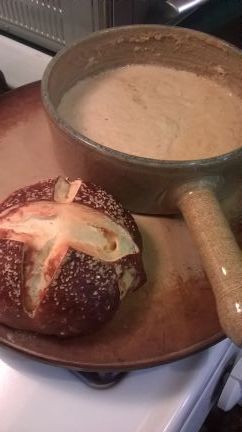
MaryJane, Farmgirl #1 Plowin' Thru ~ giving aprons a good wrap for 45 years and counting ~
 |
 |
|
|
MaryJane
Queen Bee
    
16806 Posts

MaryJane
Moscow
Idaho
USA
16806 Posts |
 Posted - Jun 28 2021 : 1:13:03 PM Posted - Jun 28 2021 : 1:13:03 PM

|
Carrie Williams (Carrie W, #147) has received a certificate of achievement in Farm Kitchen for earning an Intermediate Level Bread Making Merit Badge!
“Upon starting this badge, I knew of “active dry yeast” which needs to be “proofed” before using, and “nutritional yeast” which is not used in baking but rather is used like a health-ful flavoring for foods and snacks. I also had a bread machine many years ago and I do remember that I needed to buy special yeast for that. What makes bread machine yeast different is that it is “instant” and doesn’t need to be “proofed” like active dry yeast, and it is quite stable, lasting up to 2 years if stored properly. Then there is also “fresh” yeast which is purchased in “cakes” or cubes. It is less stable and should be used soon after purchasing.
My favorite yeast bread to make are French baguettes which comes from my beloved copy of The Joy of Cooking which I received from my mom when I moved into my first apartment. I have learned so much from this book, especially in regards to baking bread. My recipe calls for active dry yeast and the finished product has a thick chewy crust since it is baked in an oven with a pan of water underneath.
The other yeast dough recipe I enjoy making is for raised cinnamon rolls. These are a sweetened dough that is raised once then punched down, rolled out, spread with butter and cinnamon/sugar mix, rolled-up and sliced, then placed into a pan to raise a second time. This recipe however, is super easy to convert to a non-yeast dough using a tablespoon of baking powder and buttermilk in place of the water in the yeast recipe. I do this version when I am impatient for something sweet! There is no need to allow the dough to raise, just pat it out, spread with butter and cinn/sugar mixture, roll, slice, and bake. They bake in less time, too.
I loved everything about working on this badge because I love both bread making and experimenting in the kitchen!”
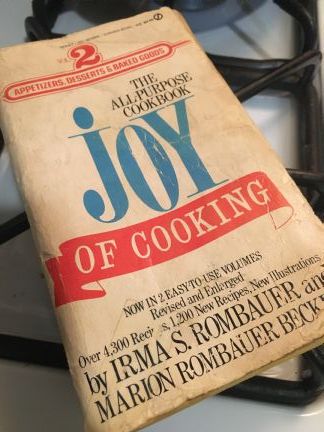
MaryJane, Farmgirl #1 Plowin' Thru ~ giving aprons a good wrap for 45 years and counting ~
 |
 |
|
|
MaryJane
Queen Bee
    
16806 Posts

MaryJane
Moscow
Idaho
USA
16806 Posts |
 Posted - Jun 28 2021 : 1:14:25 PM Posted - Jun 28 2021 : 1:14:25 PM

|
Carrie Williams (Carrie W, #147) has received a certificate of achievement in Farm Kitchen for earning an Expert Level Bread Making Merit Badge!
“I have made MaryJane’s sourdough mother at two different times in my baking career. It is always so easy and I have had no trouble getting it going. Sadly, I am not really good at keeping the mother happily fed so I have had to restart it a couple times. In finishing up this badge I decided to try a recipe that my daughter used to get her starter going. This is Paul Hollywood’s recipe at www.paulhollywood.com/post/sourdough-starter It requires an organic apple chopped up with the peel (no core). This worked fabulously for me!! It smelled lovely and kept for a very long time in the fridge. I was able to make several recipes from it during the last two semesters of school before I finally used it up making doggie treats because I got too busy to keep it going.
If you check out this recipe, you’ll see that it calls for you to discard a cup of the mixture each time you feed it. I hate to waste ANYTHING so I found some recipes tailored exactly to one cup of discard. My favorite was for scones and you can find the recipe at www.cookiemadness.net/2020/11/12/sourdough-discard-scones/ These were easy to make and froze well, too. What is important to remember is that sourdough discard is removed from your “mother” BEFORE FEEDING! If you remove a cup of starter after feeding then the concentration of fermented ingredients is greatly reduced and these recipes will not work in the same way.
I love all things sourdough and, as an avid nurturer, I enjoy tending to things like my garden, my indoor plants, and my growing sourdough starter. I enjoyed working on this badge and the many "mothers" that I have created over the years as I explored the recipes in MJF magazine and online.”
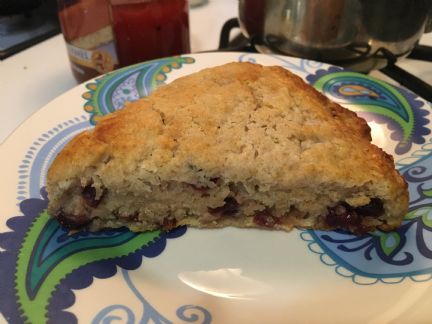
MaryJane, Farmgirl #1 Plowin' Thru ~ giving aprons a good wrap for 45 years and counting ~
 |
 |
|
|
MaryJane
Queen Bee
    
16806 Posts

MaryJane
Moscow
Idaho
USA
16806 Posts |
 Posted - Jun 28 2021 : 1:41:18 PM Posted - Jun 28 2021 : 1:41:18 PM

|
Theresa Atkinson (Theresa Atkinson, #1632) has received a certificate of achievement in Cleaning Up for earning a Beginner Level Shopping Green Merit Badge!
“I've collected more than six reusable bags for shopping. Some are from our store Meijer's and some from Aldi's. Prior to the Covid-19 virus all I used were reusable bags, then during restrictions I had to go back to plastic (per Meijer's requirements). I was still able to use my reusable bags at Aldi's. I'm now allowed to bring my own bags to Meijer's. I've been using the reusable bags for over a year now so I believe that I am committed to reusable.
I love using my reusable bags. When I was forced to go back to plastic I hated it! Now I have to figure out how to recycle all the plastic bags I've collected during the restrictions.”
MaryJane, Farmgirl #1 Plowin' Thru ~ giving aprons a good wrap for 45 years and counting ~
 |
 |
|
|
MaryJane
Queen Bee
    
16806 Posts

MaryJane
Moscow
Idaho
USA
16806 Posts |
 Posted - Jun 28 2021 : 1:42:41 PM Posted - Jun 28 2021 : 1:42:41 PM

|
Theresa Atkinson (Theresa Atkinson, #1632) has received a certificate of achievement in Cleaning Up for earning a Beginner Level Recycling Merit Badge!
“I researched the recycling requirements for my area.
I discovered that we do have curb pick up for recycling for an additional cost.
They had a chart of what could and could not be recycled. Picture attached.”
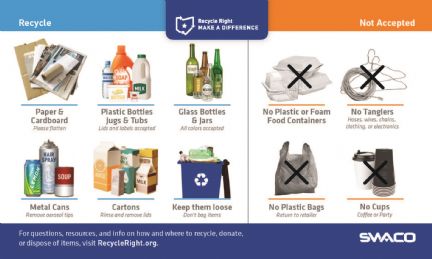
MaryJane, Farmgirl #1 Plowin' Thru ~ giving aprons a good wrap for 45 years and counting ~
 |
 |
|
|
MaryJane
Queen Bee
    
16806 Posts

MaryJane
Moscow
Idaho
USA
16806 Posts |
 Posted - Jun 28 2021 : 1:45:05 PM Posted - Jun 28 2021 : 1:45:05 PM

|
Theresa Atkinson (Theresa Atkinson, #1632) has received a certificate of achievement in Each Other for earning a Beginner Level Reading, 'Riting, and "Rythmatic Merit Badge!
“For this badge, I read the following books:
Miss Peregrine’s Peculiar Children, by Ransom Riggs
Hollow City, by Ransom Riggs
Library of Souls, by Ransom Riggs
An Indigenous Peoples’ History of the United States for Young People, by Jean Mendoza
Lies My Teacher Told Me: Everything Your American History Textbook Got Wrong, by; James W. Loewen
His Truth is Marching On: John Lewis and the Power of Hope, by Jon Meachman
HER. By Pierre Alex Jeanty
HER. Vol 2 by Pierre Alex Jeanty
Every Day is a Poem: Find Clarity, Feel Relief and See Beauty in Every Moment: by Jacqueline Suskin
Loved all of the books. I plan on reading the rest of the Miss Peregrine's series—what an adventure.
There is so much history out there that was not taught in school, although I did have a good education, I feel it was lacking in some of the history of our great country. I'm looking forward to learning more.
What can be more relaxing than poetry.”
MaryJane, Farmgirl #1 Plowin' Thru ~ giving aprons a good wrap for 45 years and counting ~
 |
 |
|
Merit Badge Awardees - Woo-hoo Sisters!:  Farmgirl Sisterhood Merit Badge Awardees Farmgirl Sisterhood Merit Badge Awardees  |
|
|
|